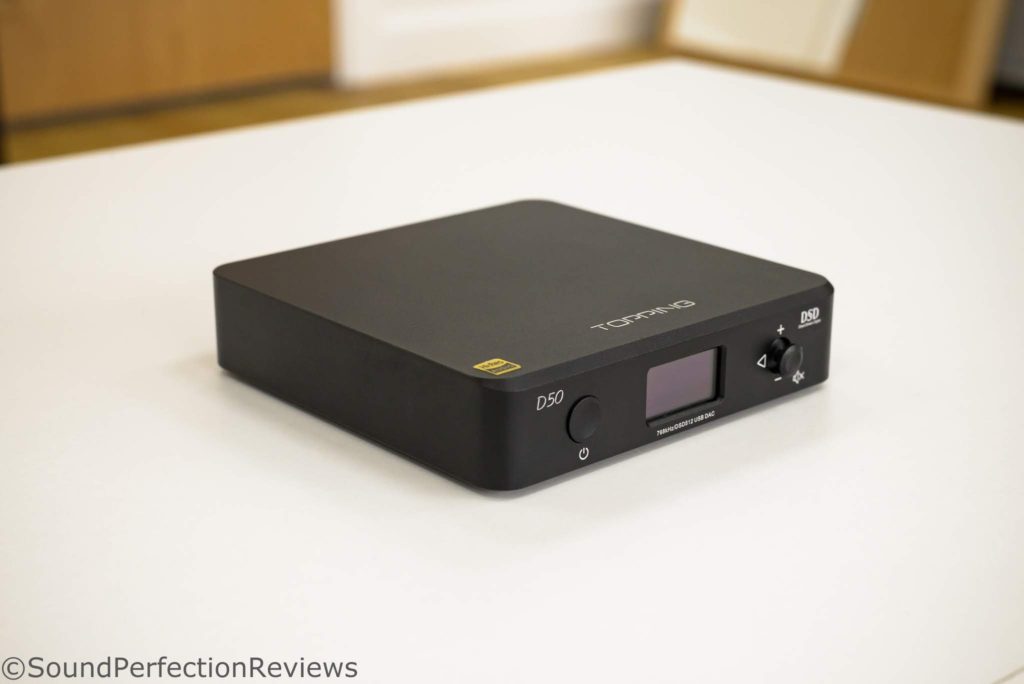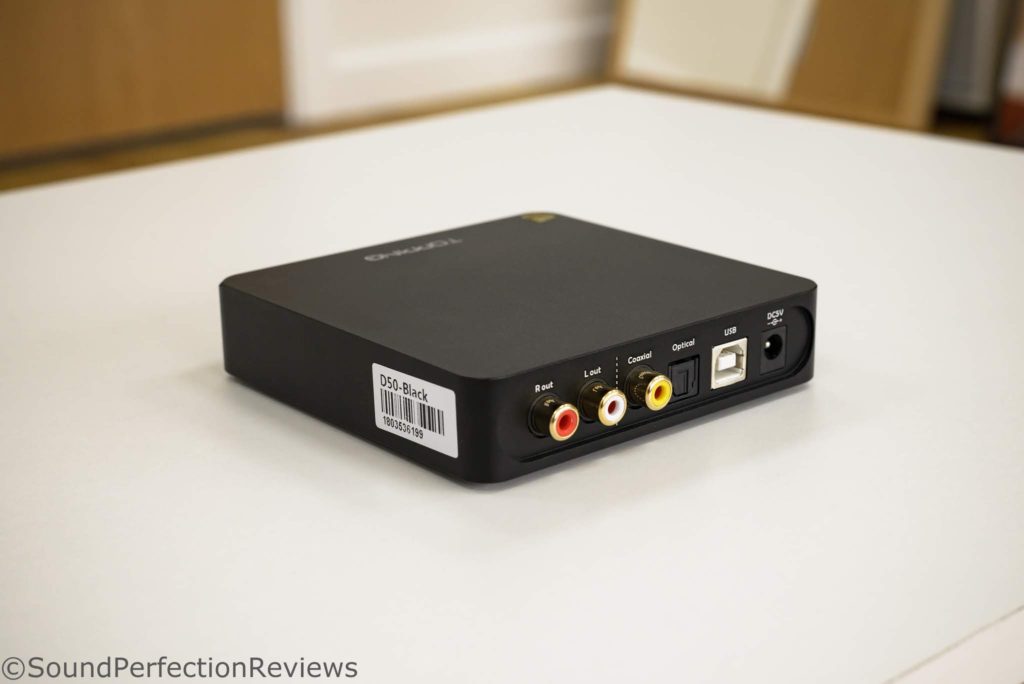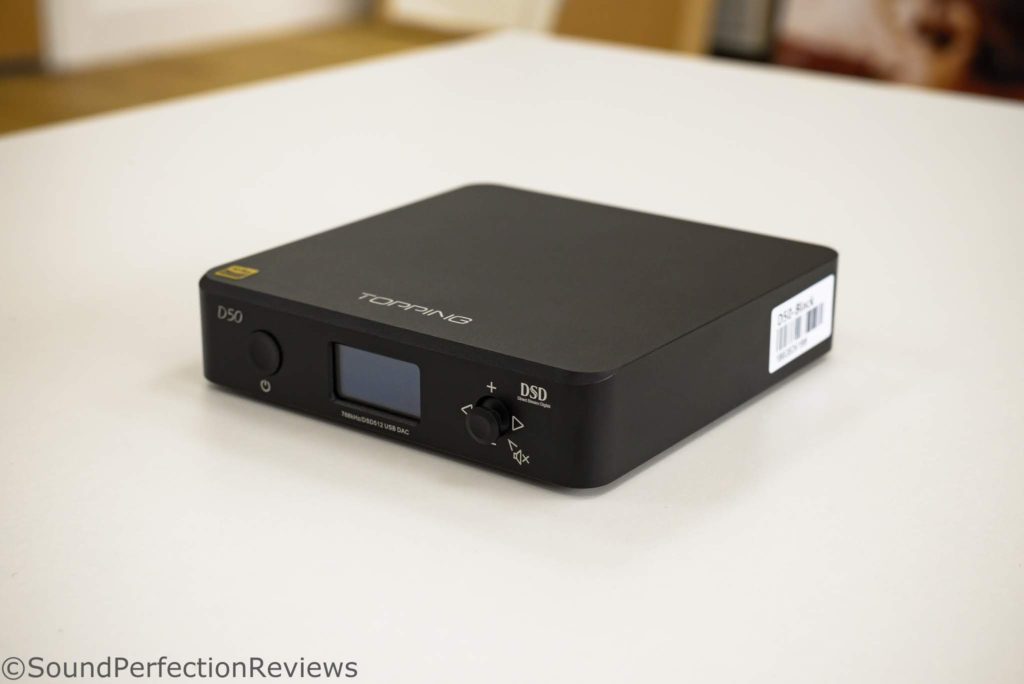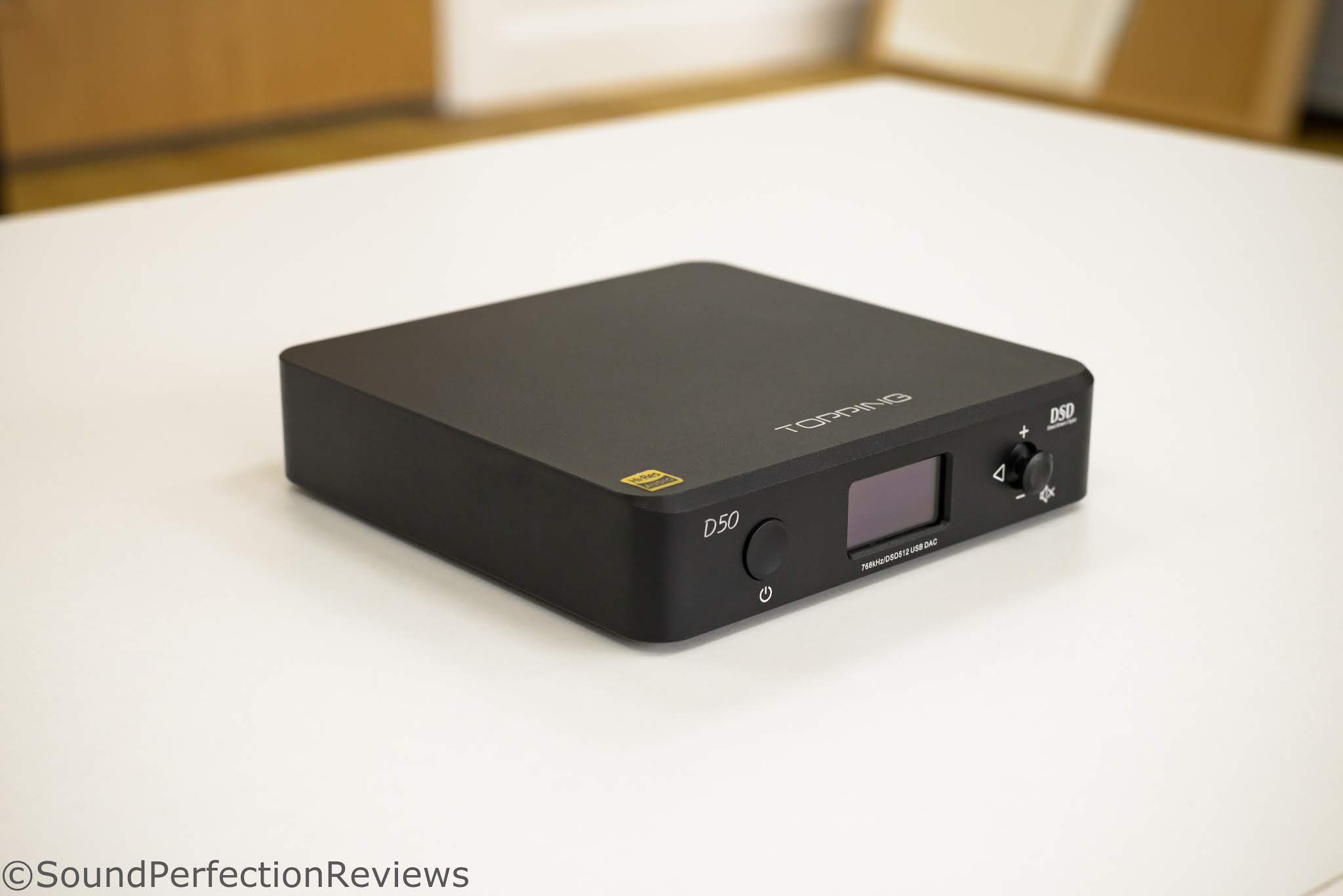Firstly I would like to thank Topping for this sample to review, it has been used for well over 100hrs.
*disclaimer: This sample was provided for the purpose of writing a review, no incentive was given to write a favourable review. All opinions expressed are my own subjective findings.
Gear Used: PC > D50 > Burson Fun V6 Vivid / JDS Labs O2 > HiFiMan HE-500 / HD820 / Focal Clear / Meze 99 Classic

Tech Specs:
http://en.tpdz.net/products_detail/productId=37.html
Buy it at Apos Audio
Packaging, Build Quality and Accessories:
The D50 comes in a nice little black box with the brand name on the top and a small Hi-Res Audio sticker. Lift the top off and you’ll find the D50 held tightly in a foam insert with the accessories neatly packed below. The packaging is super simple, but looks slick and there are no unnecessary frills to unboxing it.
Build quality is really impressive, comparing it to the D30, the D50 feels like a much more solid and refined product. The one part that lets it down is the volume knob/controller, it just feels a bit floppy when the rest of the unit is rock solid. The inputs and outputs on the back all feel great, the on/off button fits with the rest of the look, and the screen is bright and easy to read.
Accessory wise you get the power cable and the USB data cable, that is all but then again what more do you need with a DAC like this.
Functions:
The D50 has 7 digital filters, all listed on their website, and it has a host of other features too. The volume is variable, so you can have it at 0dB and it’ll be a pure line-out, or you can control it with the knob on the front, great for active speakers.
The knob also allows you to change the input, along with the settings in the menu. There are a few handy settings, you can have the DAC automatically switch on when it receives a signal, you can set the screen brightness along with whether you want the screen to stay on, or whether you want it to turn off after 30s. You can also have the D50 turn itself off when it sees no signal for 1m.
The D50 has optical, coaxial and USB inputs, via USB it can handle all bit rates up to 768kHz/32bit + DSD512.
Overall the D50 has plenty of features and excellent build quality, but the main thing is, how does it sound?

Sound:
Well DAC’s are quite hard to review subjectively sometimes as they are all quite similar if designed properly. The D50 is no different, it is to my ears, very neutral and transparent in the system, I never detected any background noise when using any of the inputs. The D50 is incredibly clean and detailed, it doesn’t matter what amp you pair it with, the consistency is there.
It does not suffer from any colouring in any way, my EL DAC from JDS Labs does not support all the same formats but it does get out of the way of the music, as does the D50. The D50 in my opinion is a little bit sharper in terms of detail retrieval, they are presented a little bit more upfront. The EL DAC is a little more natural sounding to me, a little more laid back but not what I would consider warm.
Where the D50 stands out is the way it is neutral and has incredible detail and separation but there is never any “digital” glare that some Sabre implementations suffer from.

Conclusion:
For the price and the features, the D50 is one of the best value for money DAC’s out there. If you want to improve the transparency and detail retrieval in your system the D50 is excellent, it supports plenty of bit rates along with having multiple inputs. The PCM filters are subtle but do make a difference so experiment and find which you prefer. Apart from the slightly wobbly volume knob I cannot fault the D50 in what it does.
Sound Perfection Rating: 10/10 (A solid purchase for the price)


hi, can you compare a little more between the el dac and d50? which do you think gives better detail retrieval, soundstage, etc? and did you power the d50 using the usb cable they include or a separate power supply?